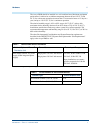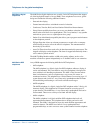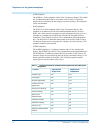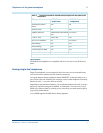
11
Overview for Avaya IP600 Internet Protocol Communications Server
555-233-001 — Issue 5 — November 2000
2 Desktop/Console Solutions
The communications needs of people in your company vary widely. Some may require only basic telephone
service. Others may need effective messaging services or high-speed data communications and access to a
variety of host and personal computers.
Avaya IP600 brings voice communications, data communications, and messaging together on the desktop, which
enables you to customize the types of service for various users.
Note:
Some applications and products are unavailable in some countries. Please
check with your local distributor for further information about the
features and applications available to you.
Telephones for the global marketplace
A wide variety of telephones, ranging from basic single-line to sophisticated digital
service that integrates voice and data communications, are available with Avaya
IP600. You can incorporate a mixture of telephone types based on user job function.
All of the telephones are easy to use and provide the ability to tap into the power of
Avaya IP600.
Avaya IP600 supports four basic families of telephones—Internet Protocol (IP),
Digital Communications Protocol (DCP), Analog, and Basic Rate Interface (BRI).
These terms describe how each type of telephone communicates with the Avaya
IP600. These families of telephones are designed to accommodate the types of
communications various users require. All telephones have touch-tone dialing and the
message-waiting lamp for notification of messages.
The IP, DCP, and BRI sets use digital transmission for integrated voice, data, and
control signals. These telephones provide a rich array of time-saving and value-
adding features.
With help from our many global customers, Avaya has developed the 4600-, 6400-,
8400-, and 6200-series telephones to meet the demand for telephones in the global
marketplace.
4600-Series IP Telephones
The 4600-series IP telephones are highly integrated, high function standards-based IP
end points. They are designed for superior audio quality with full duplex
speakerphone and echo cancellation capability. The telephones have two
10/100 Mbps automatic negotiating Ethernet connections: one for the phone and one
for a PC. "Blackburst" technology is used to assure that the voice packets receive
sufficient priority. G.711, G.729A/B and G.723.1 compression schemes are all
supported. (Availability of the compression algorithms is delayed but will be
provided to all existing customers free of charge when available). A universal serial
bus and an infrared port are built in, ready to support future applications.


















